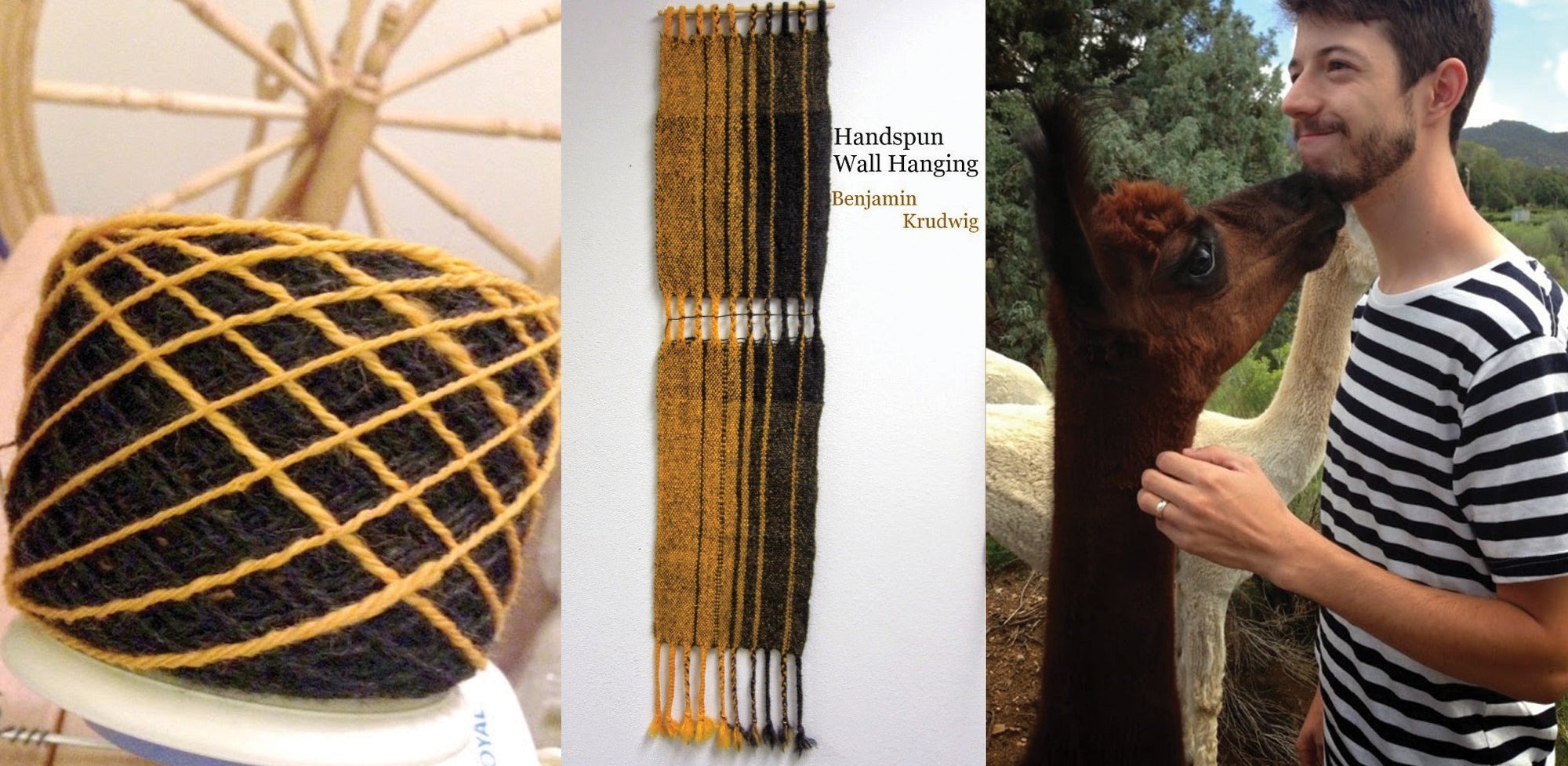By Benjamin Krudwig
Last August my wife and I went to New Mexico for our honeymoon, staying in both Taos and Santa Fe. While in Taos, we stayed in a quiet vacation home on an alpaca farm. After a few days of rest and relaxation, we traveled to Santa Fe for more arts and entertainment. So much of culture in the "Land of Enchantment" centered around fiber: fiber farms were down every country road, weaving studios were just around the corner, and rugs woven by locals could be seen hanging on walls and in window displays. The museums were filled with antique textiles, reminding me that all of this work was (and still is) done using simple tools. All of this texture in the animals, landscape, and culture made me buzz with creative excitement!

On one of our day trips to Ojo Caliente, we found ourselves surrounded by many simply stunning handwoven wall hangings, modern in color scheme with a minimalist vibe. Each piece had a gorgeous ombre weft, punctuated by thin horizontal lines of black. It took everything in my self control not to take one home. These particular works were extremely inspiring, filling my head with ideas for my own wall hanging.
Returning to Boulder, I couldn't wait to get weaving again. As soon as I could, I pulled out my 15" Cricket Loom and started playing around. I had recently Navajo plied some self-striping yarn that alternated between dark brown and bright yellow. (Look for a spinning tutorial in the future.) I decided to use this in the warp.

For the weft, I used a blended handspun with the same two colored fibers carded together. This project allowed me to use some yarn that wasn't suitable for wearing next to the skin, but still had great color and depth.
I warped the full width of the loom in a 10-dent reed. My warp length was about 5 feet.

Since the striping was spun into the yarn, it showed up in the warp automatically during the direct warping process. After hemstitching the end, I started weaving with dark brown handspun, wove for about a foot, and then switched to my blended yarn which I wove with for about a few more inches.
To create an open stripe in the middle of the weaving, I braided three bundles of four warp threads for about an inch. This created braids on both ends of the length. I carried my shuttle up the edge of the braid and passed it through the center of the braid to lock in the motif (shown by the stick below). I repeated this technique across the width of the warp until I reached the other side. After the final braid, I pulled my weft yarn through to keep it all together, carried it up the side, and continued weaving.

braiding technique (shown on a different warp)
I continued weaving with my blended yarn until I ran out, and then switched back to my dark brown. I ended the weaving with hemstitching and then braided the fringe on each end. I lightly felted the wall hanging. Because the two colors were different kinds of wool, they shrank at different rates. For the top edge, I folded the braids in half and tacked them down on the back so that I could pass a dowel through for hanging.
This is a pretty free-form piece. I had a basic plan, but not a solid picture of what it would turn out to be. I don't mind the irregularities, and in fact they add an organic touch that I rather like. This wall hanging will always remind me of our trip to New Mexico, transporting me every time I look at it.

